#the making of
Explore tagged Tumblr posts
Text





Marvel Studios Assembled 1.2: "The Making of The Falcon and The Winter Soldier"
They've got to be listening to Marvin Gaye, right?
#daniel brühl#baron zemo#helmut zemo#sebastian stan#winter soldier#bucky barnes#anthony mackie#sam wilson#falcon#marvel studios assembled#the making of#the falcon and the winter soldier#TFATWS#2021#behind the scenes#my gifs#gifset
1K notes
·
View notes
Text
didn't know what a meme was and yet she keeps making gif-able moments

#she's so unserious i need her forever#and that blooper reel asap#kathryn hahn#the making of#agatha all along#agatha harkness
761 notes
·
View notes
Text



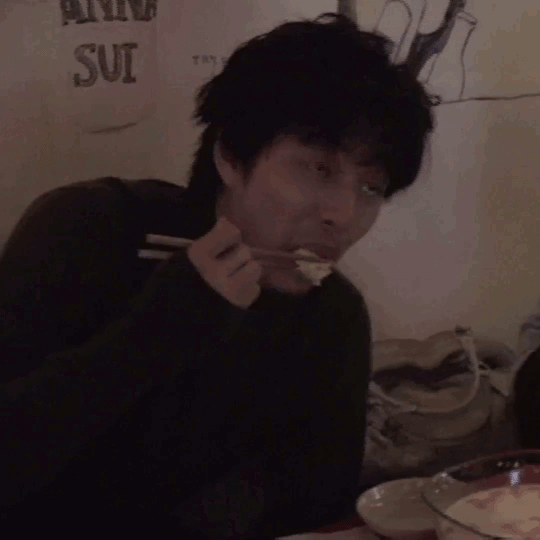
gong yoo behind the scenes of the i like yoo photo collection photoshoot (2008)
(source: I LIKE YOO [The Making Of] [DVD])
#gong yoo#gongyoo#gong ji cheol#gong jicheol#gongjicheol#공지철#공유#k actor#kactor#i like yoo#photo collection#photobook#the making of#behind the scenes#he's such a cutie i'm gonna cry#mjracles
70 notes
·
View notes
Text
The Making Of: Fargo
Today, May 4 2025, is the tenth anniversary of when I started Fargo! To celebrate, here is a behind-the-scenes/retrospective on the work. Enjoy!
I. This Is Your Brain On Anime

I started writing Fargo at the lowest point in my life. I'd been watching anime.
For years, I'd managed to not watch anime. Sure, there was Pokémon as a kid, and to a lesser extent Digimon and Yu-Gi-Oh. And as a preteen cinephile who followed the Oscars, Spirited Away's Best Animated win got me to pick it up on DVD. I'd later seen a handful of anime films that similarly carried cinephile credibility: other Miyazakis (Nausicaä, Princess Mononoke), Akira, Ghost in the Shell, Paprika. But I had always refused to watch anime anime. You know what I mean. The seasonal stuff.
In 2007, the final fringe of Wild West internet before Facebook changed everything, seasonal anime was exploding in popularity. A lot of this was due to sheer accessibility. No longer did you need to find a VHS release of some OVA or hope for a play on Adult Swim. Fan subbing and dubbing communities rendered more-or-less anything showing up in Japan available to worldwide audiences via a nifty new site called YouTube. This level of immediacy, combined with the niche tight-knit communities that governed the internet prior to social media, made following seasonal anime a social event. Week by week people posted reactions, reviews, theories, and memes, driving up engagement and rapidly expanding anime's reach as an entertainment medium.
The big breakthrough title in this regard is 2006's The Melancholy of Haruhi Suzumiya, a massively influential show that changed the look and feel of mainstream anime for years. But my first brush with the anime community came via the following year's Lucky Star, by the same studio and with the same moe stylings. As I prowled the boards of Nintendo's official forum, Nsider, and its successor Nsider 2 (after Nintendo, in characteristically Nintendo fashion, annihilated the site from existence without warning), I found myself constantly bumping into people posting pictures of these four hyper-cutesy anime girls with candy-colored hair. They were everywhere. Teenage me took one look and came to an unshakeable and incontrovertible conclusion:
Only girls would watch this!
Saccharine aesthetic? Lack of plot? And, god, all of the characters are girls? Girl show. No doubt in my mind. Nah, none of this "anime" crap for me. I'll stick with real media, like Leprechaun 4: In Space (which I eagerly stayed up until midnight to watch on the SciFi Channel) and Eli Roth's splatterhouse classic Cabin Fever.
Then some devious motherfucker, I don't even remember who they were, told me something truly insidious, something that would haunt me for years to come. "Hey," they said, "what if there was a show like Lucky Star except they all killed each other with knives? Wouldn't that be awesome?"
And they recommended me Higurashi no Naku Koro ni.
youtube
(They showed me an AMV with a similar feel to this one to entice me. Unfortunately that original AMV is lost to history.)
I wound up bingeing the entire 50-episode show, in 10-minute chunks on YouTube, across a single 24-hour period. I couldn't stop myself. It was the same obsessive consumption that would infest me when I discovered Homestuck five years later. Obsession so intense that after I finished it, I immediately went crawling in search of more anime and devoured Death Note in another 24-hour span.
Emerging, blinking, back into the sun, I looked around and realized I couldn't go on like this. I couldn't plunge headlong, headless, into anime. I could not become the dreaded "weeb."
So I cut off anime. No more. As quickly as my drop into the abyss began, I ended it. And a few years later, when I went to college, I cut off the internet as a social experience altogether. No more forums, no more chatrooms. I was an adult. Time to do adult stuff, like read classic literature, write novels, and play League of Legends for 10 hours every day.
Despite how it sounds, college was a great time in my life. I enjoyed learning, enjoyed going to classes, enjoyed reading textbooks, enjoyed writing essays. And I was good at it, very very good—even with the 10-hour League sessions. I felt no need to reconsider anime.
Then I graduated.
Graduating college was like slamming face-first into a brick wall. My entire life until then had seemed to be building toward something. Academia is a series of stepping stones to more prestigious levels of academia (middle school! high school! college!) with a golden gleaming Adulthood at the end of the line, omnipresent. And I did it! My success in college got me a job, eight hours in an office five days a week, much better than anyone else in my post-recession cohort. Adulthood accomplished.
It was miserable. That gleaming paradise Adulthood was a sham. I was doing less work and less difficult work than at college but they were demanding I spend way more time doing it. All sense of fulfilment vanished. There was no longer progress, no bigger and better things on the horizon. I had nothing to hope for. I'd achieved the thing people tend to hope for, and THIS WAS IT. The notion that consumed me was that my life had slipped into overtime, a dead zone past its expiration date, treading water in misery. I also had a 90-minute daily commute in SoCal traffic.
My free time was cut down to a fraction of what it was in college, so no more 10-hour League sessions. I tried to maintain my schedule of reading 50 pages and writing 2,000 words a day, but I no longer had the time or energy, and it didn't make sense why I didn't have the time or energy, because I was doing things that were so trivial and easy compared to my college courseload. Work was an arbitrary time-wasting machine with nothing ahead except 40 more years of work. I wanted to die.
Despairing, seeking nothing save relief, I turned back to anime.

In a Skype groupchat I wound up in, there were two teenagers with their fingers on the pulse of the latest anime buzz. They were my guides back into this wretched world. First, I was served up Fate/Zero, which I consumed quickly (though not with the same leisure time to afford a 24-hour binge) before asking for seconds. I was then recommended Angel Beats. Okay, I said, typing Angel Beats into YouTube, which seven years after Higurashi I still assumed was the main way to watch anime. The first result I got was called Bludgeoning Angel Dokuro-chan. Aha, I said. Angel Beats, Bludgeoning Angel, I know what this is. It's an alternate translation of the title.
It's the kind of comedy of errors that could only happen to someone who timewarped directly from 2007 to 2014 with complete ignorance of the intervening years. Angel Beats, of course, is a tearjerking Key show about students in the afterlife coming to grips with their tragic deaths. Bludgeoning Angel Dokuro-chan is about an angel repeatedly bludgeoning a boy because otherwise he will grow up and create a world where every woman stops aging at 10 years old—a so-called "Lolicon Paradise." (As someone who reads classic lit, seeing the bizarre cross-cultural route Nabokov's novel has taken always amuses me.)
When I started Bludgeoning Angel, I was a little uncertain whether I had the right show. Its tone didn't quite jive with Bingus and Bungus in the Skype chat. Hesitantly, I decided to react in chat to the first thing that happens in the show. "Haha," I said. "The angel really just killed that guy."
In a sadistic twist of fate, this is somehow exactly how Angel Beats begins, too. My friends responded as though everything was total normal, and I figured I must have the right show after all. Thus, I wound up watching the entirety of Bludgeoning Angel Dokuro-chan, which becomes increasingly surreal, violent, and depraved as it goes on, and only learned my mistake after the final episode. That show probably tainted me forever.
Afterward, I watched the real Angel Beats (in my depressive stupor, it made me cry), Mirai Nikki, and the "only for girls" Lucky Star (it also made me cry). I was getting hooked. It was only a matter of time before Bingus and Bungus recommended me a true landmine. They did. "I think you might like this," Bungus said, tepidly, not exactly sure.
"Hit me," I said.
II. Puella Magi Madoka Magica

The League of Legends-induced timewarp that imprisoned me in college had the side effect of allowing me, in early 2015, to watch Puella Magi Madoka Magica completely blind. I hadn't the faintest idea what it was about, or even a hint of its reputation. Bungus said, "Watch it," and I watched it.
Believe it or not, this blindness backfired. Despite the sanctity people place on spoilers, expectations are a crucial component of the narrative experience. Unaware of what I was watching, I was not nearly as impacted by what I saw. The much-famed Episode 3 twist was nothing to me. Why? I was certain, absolutely certain, the death wouldn't stick. I felt extremely confident either Madoka or Sayaka would make a wish to bring Mami back to life.
Nonetheless, the show grew on me. The cute exterior steadily transforming grimmer was a Ratatouille flashback to Higurashi; there's something so delicious about how jaggedly the hyper-poppy upbeat OP jumpscares in the middle of increasingly hopeless situations during the show's back half. After 12 episodes and a movie I needed more. Not more anime. More Madoka Magica.
I didn't get it from the spinoffs, of which there were several even then, most of which I knew nothing about. Instead I went looking for it on more familiar terrain, another relic of my 2007 timewarp: fanfiction-dot-net. This is where people go to engage with media fandom, right? I hit up the Madoka page, sorted content by number of reviews, and got this:

Well, sort of. Fargo wasn't there yet, obviously. The other five were, in this same order. I opened To the Stars, read a chapter or two, found it impossibly boring and nothing at all like the show, and discarded it. Resonance Days, A Happy Dream, and cat's cradle [sic] all looked like shipfics, which was not my speed. That left one fic, which I would read in one day home sick (legitimately) from work, one fic that would prove massively influential on the idea for Fargo I didn't yet have.
Puella Magi Homura Magica by Lestaki, despite its second-place position on this prestigious list (behind only a work once described by acclaimed guy-with-a-blog Eliezer Yudkowsky as the most prescient depiction of future warfare ever written), is a fanfic I have never heard anyone mention once in my now 10-year stint in the Madoka Magica trenches. Even in the subculture it is a blank of memory, which makes sense if you look at its publication and last updated dates. It came out May 24, 2011—barely a month after the show finished airing—and was unceremoniously abandoned, incomplete, little over a year later. It's easy to see the fic emerging in the frenzy of activity prompted by the show's immediate popularity, rising on the tide, and vanishing under the waves of works with more temporally dogged creators.
So what is it?
PMHM is a three-arc story set after the show (and ignoring, of course, Rebellion, which it predates). Its first arc focuses on the three-man band of Homura, Kyoko, and Mami as they prepare to fight against a "demon prince"—an exceptionally powerful, city-destroying wraith—that Kyubey predicts will be born in Mitakihara soon. The demon prince is so powerful that the trio cannot possibly defeat it on their own, causing them to soon be joined by a ragtag team of original characters, spinoff characters, and a contracting Hitomi. The squad butts heads, but ultimately manages to come together to destroy the demon prince when it appears.
The second arc revolves around an inter-city magical girl war. The Mitakihara girls, for reasons I don't fully remember, have to invade and defeat an OC magical girl warlord in charge of another city. Both sides amass allies until the final confrontation involves at least a hundred magical girls. At the end of the arc, the OC villain reveals she manufactured the war to put Homura in a situation where she would be forced to continually use her time-rewinding powers to save Kyoko and Mami (whom she has come to care for over the course of the story), which is part of the villain's plot to generate enough karmic potential that she can create a new Madoka-esque god. Homura is aware that every time she rewinds time, she is helping the villain usurp Madoka, so she's torn between saving her living friends and saving her conceptual girlfriend.
That's where the story abruptly ends, mired in a series of repetitive chapters where the villain keeps finding ways to kill Kyoko and/or Mami and forcing Homura to turn back time. (It seems the author trapped themselves in the concept of showing each timeline in detail and lost momentum fast.)
And that's where Fargo begins.
III. Williston

Fargo was not a conscious work. Unlike most of my fiction, it was not assiduously planned. It was not kicked around in my head for years before I started writing it. It was not drafted and redrafted. Fargo was a creature of instinct, and because of that even now I look at it with a certain sense of wonder. Both Chicago and Cleveland Quixotic originated with me examining Fargo, trying to see what made it so popular, and laboriously reengineering whatever I concluded was the cause (I was wrong both times).
It emerged in my head not as an idea, but a vibe. Frigid, frostbitten wasteland. A tough, take-no-bullshit magical girl, dead inside. She'd use a Gatling gun. Long brown coat.
I was 60,000 words into a draft of a story I'd been planning since I first read Homestuck in 2012, a story I was tentatively calling Soulstealer but would eventually call Modern Cannibals. But I didn't want to write it anymore. At work, I was still miserable. I wanted to write a work of misery. I wanted to write a miserable human being. I abandoned the Modern Cannibals draft despite how far along it was (I was at the scene where Z. rescues Kiki from Mitchum's party). I began, as if automatically, writing something else. It was the same surrender that had led me to anime in the first place. The path of emotional, intellectual least resistance.
It's probably because I was on this path that I wound up unconsciously borrowing so many structural and worldbuilding cues from Puella Magi Homura Magica, especially in the first arc, with the Williston archon substituted for the Mitakihara demon prince. It wasn't even a conscious decision to do what I had seen in PMHM; I didn't realize the overlap until later. I was putting onto page the last thing lodged in my brain, and that was it. At work, I'd recently learned about the homeless crisis in Williston due to the shale oil boom, and that wound up in the story too.
Basically every part of the first few chapters of Fargo manifested on the page without me having any idea what it would build to. When Kyubey told Sloan to go to Williston, I knew he was being deceptive, but I didn't know how, and certainly had not figured out his elaborate plot to defeat Homura yet. Ditto Omaha. Clair Ibsen as Sloan's detested rival was a name I flicked onto the page at random (combining Clair, the gym leader from Pokémon, with Henrik Ibsen, Norwegian playwright, because I figured a character from Minnesota should have a Scandinavian surname). The girl, unnamed, who scuffles with Sloan in Chapter 1 was not yet Anoka; I had no plans for her to reappear, nor plans to make her relevant to how the Williston archon was born. When writing Chapter 2, I had no conception of Delaney or Erika (another Pokémon gym leader) as characters until I started writing them, at which point their personalities emerged, fully-formed, all at once. I didn't know Delaney's backstory, only that she was suspicious.
What made Fargo work is that I very quickly figured this stuff out.
Throwing these ideas and characters onto the board was like putting myself in an escape room, and the challenge then became to figure out how everything slotted together. It was around Chapter 4—which I had written fully before I started posting the story, and which was about the time I realized I actually wanted to go through with what was starting to shape up as a long and ambitious work—that I started seeing the connective tissue. Kyubey's plot came into view, as well as Omaha's role in it. (Hence why Chapter 5 begins with a scene involving Homura.) I figured out Delaney's backstory, though I hadn't yet figured out how she was part of Kyubey's plot yet. The end of the first arc formed in my mind: Erika dead, Delaney alive, she and Sloan en route to Minneapolis to fight Clair. I had the beginnings of an idea how the second arc would go; there was the ghost of an idea for a third arc, but that made the story seem impossibly long, so I wrote with the belief everything would end with Clair. By the end of the arc, when I had started thinking about Clair's goons, I had the idea for Anoka, and incorporated her into the Williston archon's origin story.
I think there are still signs of lack of foresight. The actual plot of Fargo's first arc is like the plot of a Legend of Zelda game. Go to three different places, fight three bosses, then go to the final dungeon where the final boss awaits. What the characters actually do, narratively, is spin their wheels in endless action sequences; all sense of progression is driven by the slow unveiling of Delaney and Erika's backstories, which recontextualizes them as characters, as well as broadening hints toward Kyubey's plot. And Sloan's gradual recovery from the precipice of despair, of course.
That last one was a mirror of the author. Fargo was an immediate smash hit of the kind I had never seen before; I was getting two to three comments per chapter, and they were good comments, too. Before, I hadn't even been able to beg friends and family to read my novels. (I once described the plot of a pre-Bavitz novel to my grandmother; she said, "That doesn't sound any good at all.") I expected obscurity, an obscurity reflected by the aggressively anti-SEO title I decided on as a joke (Fargo being a movie I don't particularly like, and the only real overlap between that one and mine being neither is actually set in Fargo). Receiving any reception at all was a miracle.
At the same time, I moved closer to where I worked, killing my daily commute once and for all. Time, energy, and hope were surging back into me. The dream I had always harbored of being an internationally-renowned author seemed to be finally coming true. Everything was looking up. Riding this momentum, I no longer worried about the ambitious length of my story. It was worth it. I was in for the long haul.
IV. Minneapolis

Clair's personality emerged as the natural foil to Sloan, the brutish, instinct-driven meathead: elegant, careful, intelligent, poised. It was my get-out-of-the-escape-room problem solving that led me to realize this made her similar to Kyubey himself; that connection inspired the plot twist that she was, in fact, a homunculus created by him, which turned into Delaney being a homunculus too. (In early Williston chapters, I repeatedly focused on Delaney's dead eyes to foreshadow her sociopathic turn; this pedestrian bit of description became eerily serendipitous for explaining how she changed her eye color with magic to hide its natural red.)
As an author, I myself was transitioning from Sloan-esque instinct to more careful and intelligent planning. I'd already come up with Anoka, but the other Minneapolis girls emerged in ways I thought would play well off of Clair, emphasizing her uncanny and aristocratic coldness. I entered the second arc with more elaborate plotting, where I would set up characters like chess pieces and knock them over in spectacular and fulfilling ways. It all centered around the Yaldabaoth fight, which was the first part of the second arc I came up with, in a first arc sense of unconsciousness: A massive monster of light, crawling across a city, chasing magical girls as they sped around in a car.
There were some speed bumps. This arc featured the only time while writing Fargo that I scrapped a scene and rewrote it; this being the Terminatrix's introduction, which originally showed her receiving her commission from Kyubey. I felt it was plodding and tedious compared to her current introduction, which remains highly popular. (As a side note, Puella Magi Homura Magica also includes a character whom Kyubey pays to kill magical girls he doesn't like.)
Otherwise, though, I was locked in. Everything just worked. I came up with an idea for a character or a plot twist and it made perfect sense with what I had already established. It was like magic. It was effortless. I was reading literature again, too, after a year away from it; my prose improved as a result. There is unparalleled exhilaration in growth. It was like academia all over again, where I learned new things day after day and always seemed to be ascending to some better place. I started imagining future greatness. It wouldn't stop here. Fargo was just the start. My next work would be even better, would be read by more people. (Modern Cannibals remained bouncing in the back of my mind.) It wouldn't be long before I was breaking out of the internet and into the real world. They'd be talking about me...
V. Mitakihara

Why did Puella Magi Madoka Magica mean so much to me?
Because, as I mentioned, it didn't leave an immediate impact. A lot of what I look at now as masterstroke storytelling—Mami's death, or Rebellion in general—I first watched insensible, uncomprehending, somewhat blandly being washed over. Only a few months prior I had watched Lucky Star, a work that would heavily inspire one of my future stories (Cockatiel x Chameleon), and was profoundly and immediately emotionally affected by it in a way I almost never am. I cried at its conclusion. There was something unbearable and tragic in the ending of such a nice world, no matter how inoffensive that ending was; in the banal high school life it depicted, I saw reflected what I had lost forever, been sealed away from on this side of Adulthood.
(Which explains why my mindset on it changed so radically from when I was an actual high schooler, its ostensible target demographic.)
I didn't have a similar reaction to Madoka Magica. I liked it, for sure, but it was not an emotionally harrowing experience for me. Yet it grew in my mind, in ways I didn't consciously understand. It kept crawling, kept forcing me to think about it, until there was no option but for me to drop what I was doing and write over 300,000 words of fan fiction for it.
I never figured out the answer until a few years later, when I chanced upon a post someone made on Tumblr. "Okay," it said, in typical I-know-everything tone, "but can any of you tell me a single THEME in Madoka Magica?"
It made me think. What IS Madoka Magica about, beyond a plot-and-character level? The story, at least in the show, is so lean and tight that it lacks a lot of obvious signposting in this regard. It's easy to look at Madoka Magica and see a sharp story founded on a series of slick twists, with a banal hope versus despair angle for a bit of emotional punchiness. Regardless of whether you agree with that assessment or not, it certainly couldn't have been what I saw in it to make me so obsessed, right?
It's not even like Madoka Magica is a story that lends itself to fanfic, past the level of shipfic or slice of life AU. Its extreme economy of characters renders it vitriolic to expansion. Everything that matters in the world of Madoka Magica is happening in Mitakihara to five specific people. The system extends beyond them but in a useless way; magical girls in Osaka or Russia or Fargo exist, but they are doomed to irrelevance, doomed to die pointlessly. Every canonical Madoka spinoff falls into this same pratfall; the best involve the backstories of the main cast or past Homura timeloops, the rest fail to rise above sideshow.
I think what gnawed at me, what made me brute force a new narrative into this story that doesn't need one, was the reflection I saw in it. The Lucky Star kids with all their hopes and dreams and pleasant optimism tossed into the clanking reality of Adulthood, forced to work jobs with no point and no hope until they finally just died. The more I rewatch the show, the more I become consumed by a socioeconomic reading of it, the financial disparities between the characters (Hitomi, free from all of this, is rich; Madoka, the redemptive savior, is too—while Mami is faking it and Sayaka is shabbily middle class in a foreboding and monotone apartment complex, consumed by dreams of an upper-class recital she once saw), the conversations Madoka has with her parents (who tell her again and again what "being an adult is like," only to then give advice that is utterly unhelpful), the emotionless and mercenary way Kyubey dissolves all meaning in the universe to a system of pluses and minuses.
Unconsciously, the socioeconomic aspects of the original story emerged in Fargo with even more exaggeration: Sloan is introduced in terms of her outrageous poverty, everyone else is on the economic fringes (prostitutes, drug dealers), and only Clair lives in a state of financial stability. (There's a sideplot in the Minneapolis arc where she plans to gentrify the city by rooting out its Ramseys, all in service of creating a model community to show off online.) Sloan pursues monomaniacal revenge for a betrayal she suffered at Clair's hands, but the crux of the reader's disdain for Clair lies in the unctuousness of her wealth and the disposable way she treats her employees. Plus, there's the plaid-shirted workers who osmose around Williston, silent as they fall into pits and keel over dead on the streets, parts of an economy founded on resource extraction not all too dissimilar from Kyubey's own system (though he, ironically, wonders at one point why humans would get so up in arms over such a "primitive energy source").
Sloan is a have-not and Clair is a have, so there's an innate sympathy for her in favor of her archnemesis, on top of the innate sympathy readers have for protagonists over antagonists. This all sets the stage for what is in my opinion the best part of Fargo, its third arc, where the story's thematic elements come together in more interesting and subversive ways. It's all predicated on Sloan's quest for revenge having been faulty from the start, her motives much less ironclad than they first appear and her bullheadedness making her the perfect pawn in Kyubey's schemes.

The best aspect of the third arc is how Sloan is irrelevant. Seeing the outcome of her self-absorption cuts her off at the knees, and she has to grapple with the fact that the world is a lot bigger than her immediate purview. Ultimately, her role in the climax is tangential, a singular meaningful wrench tossed into a much larger machine that manages to prompt an unexpected positive outcome. She barely even factors into the penultimate chapter. (Fun fact: Chapter 41, Love, with its 10+ character POVs, was both directly inspired by Ulysses but also by a comment I got during the first arc hoping for more POVs with drastically different writing styles.) The emotional power of Sloan's arc stems from her coming to peace with her own inadequacies, both morally and in terms of greatness, and in that way she wound up being a mirror for me to the end, didn't she? In academia, I believed I was going to be someone important, and much of the existential dread of my workplace came from its boundless mediocrity. Fargo allowed me to come to terms with that mediocrity, both in the story and without; though much of that "coming to terms" was based on the new delusion that my popular fanfic would spur me on to mainstream literary success, a delusion I would not need to reckon with until after the minimal readership for my next work, Modern Cannibals.
This also explains my decision to frame Madoka's magical girl heaven as a giant office job. Though I would also defend that decision from a textual standpoint, given the esteem Madoka has for her company suit mother, and how she visualizes her mother as an example of "successful" adulthood in contrast to the cruel failure of the magical girl system.
Lastly, there's the instinctual level of things. All this socioeconomic stuff was not explicitly clear to me even as I was writing it; I didn't consciously think "Oh gotta make this about having a job." It just came out that way, an expelling of the self, the same way I unconsciously modeled some of Fargo's structure and worldbuilding on Homura Magica. The same way, I suppose, I modeled the emotional thrust of the story on Madoka Magica. A bleak downward spiral of misery and death culminating in a sudden and unexpected redemption. When, as a teen, I watched Higurashi, I remember being bowled over by its unexpectedly happy ending. I'd never seen anything like it, not in something otherwise so macabre and pessimistic. As a teen, I enjoyed that ending as a subversion of expectations, an original and novel idea. As an adult, watching Madoka Magica, it held a lot more emotional potency, and that potency was, like everything else, unconsciously replicated in Fargo.
When I wrote that final chapter, I remember being utterly drained. The finish line was in sight and I had been doing this for a year, for 300,000 words, far longer than any other story I'd ever written until then. I remember feeling like my prose was sloppy, like I was stumbling right at the end, like the chapter was no good. But the reviews were overwhelmingly positive, and now when I reread that chapter I see nothing wrong with its prose or technique. Even stripped bare, exhausted, that unconscious emotional core remained, and maybe that sense of being stripped down, so that nothing else is there but it, is what gives it so much power.
VI. Retrospective

There are flaws in Fargo. The prose is not always my best, and there are stretches that are clunky. In Chapter 3 I wrote a 5,000-word fight scene, and became possessed by the notion that all subsequent fights must be even longer, which led to some truly overlong combat sequences. There are a lot of continuity errors and mistakes, some small, some embarrassing (there's a scene where Clair tortures Delaney with boiling water and it's clear I had never boiled water before). And, significant to me, there is a lack of thematic complexity compared to my other works, with long parts of the story that aren't interested in meaning anything at all, at least overtly.
That last part might not really be a flaw, though. There is a singleminded focus on plot and character in Fargo, prompted perhaps by the unconscious way I wrote it, that was a major driver of its success. Nobody has ever complained about the continuity errors, either. At the end of the day, people might care a lot more about what comes from the heart, rather than what comes from the mind.
I'm glad, though, to be writing this retrospective on the heels of When I Win, an assiduously structured work with a lot of deliberate thematic potency that managed to achieve similar levels of success as Fargo. For a long time Fargo was a millstone around my neck. What I once looked at as the start of my literary rise started to seem like its peak. This work that I, its author, so poorly understood, could not replicate even when I tried, and yet was by far my most popular story... It was a terrifying prospect for a long time. Though a lot of detail in this regard should probably be saved for if I write a Making Of post for Chicago in the future. (Side note: Despite the prominent role Cicero and the Chicagoans play in the final arc of Fargo, with their own unresolved theater of worldbuilding, I had no intention of writing a Fargo sequel until after the "commercial failure" of Modern Cannibals.)
Even at the depths of my self-esteem, though, I never resented Fargo or its success. It's a story I like. It's a story with a lot to like about it. And, even if I don't fully understand it, it's a story that has a lot of myself in it.
Thank you, everyone, for reading.
The concept art throughout this post was created by Phetaritette, from whom a fan once commissioned art of the main characters. At the end of the Making Of posts for Cleveland Quixotic and When I Win, I talked about where I got the names of the characters from, but other than the two Pokémon gym leader names and Henrik Ibsen reference I mentioned before, most of the names in this story were dredged from people I once knew. The only other exceptions are Erika's surname, which comes from Frank "Doc" DuFresne from Red vs. Blue; Bloomington's surname, which comes from rapper Dennis "Ghostface Killah" Coles (who would be the primary template for the rapper Malkwon in Modern Cannibals); and Hennepin's surname, which comes from League of Legends pro player Johnny "Altec" Ru.

#fargo#the making of#bavitz#puella magi madoka magica#mahou shoujo madoka magica#madoka magica#pmmm#Youtube
66 notes
·
View notes
Text
september 21, 2016
taylor recorded king of my heart while wearing the same outfit as she did for karlie’s birthday facetime call

#september 21 2016#september 21#2016#king of my heart#reputation#writing#the making of#gaylor throwbacks#gaylor#gaylor swift#lgbetty#kaylor#karlie kloss
95 notes
·
View notes
Text

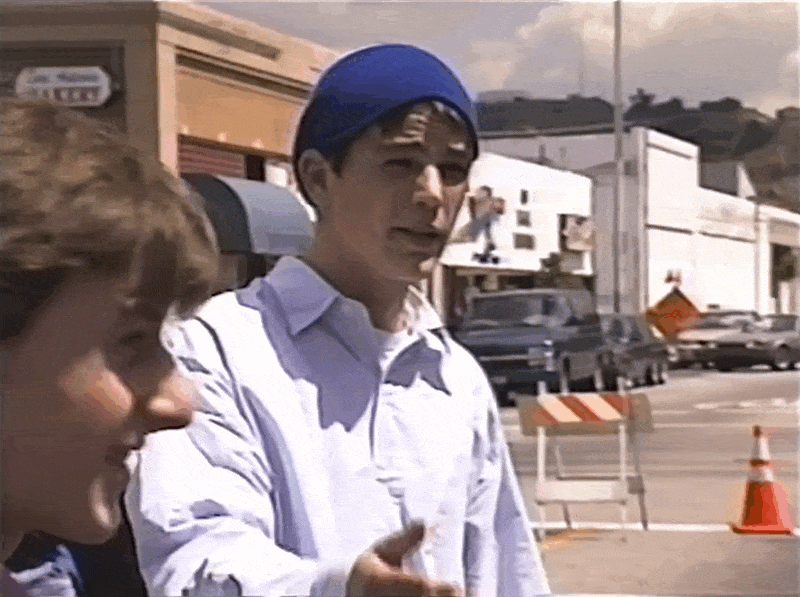
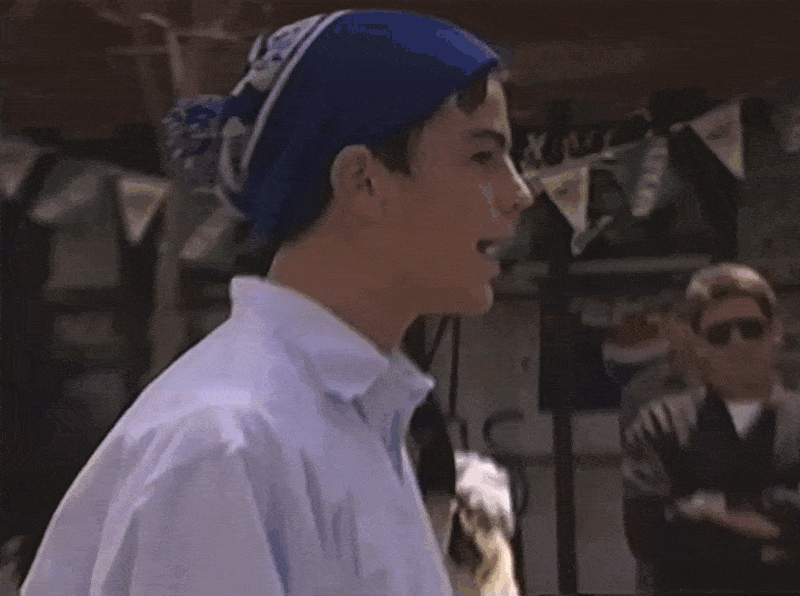




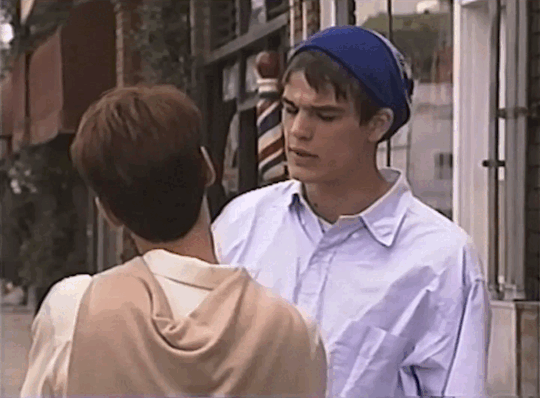

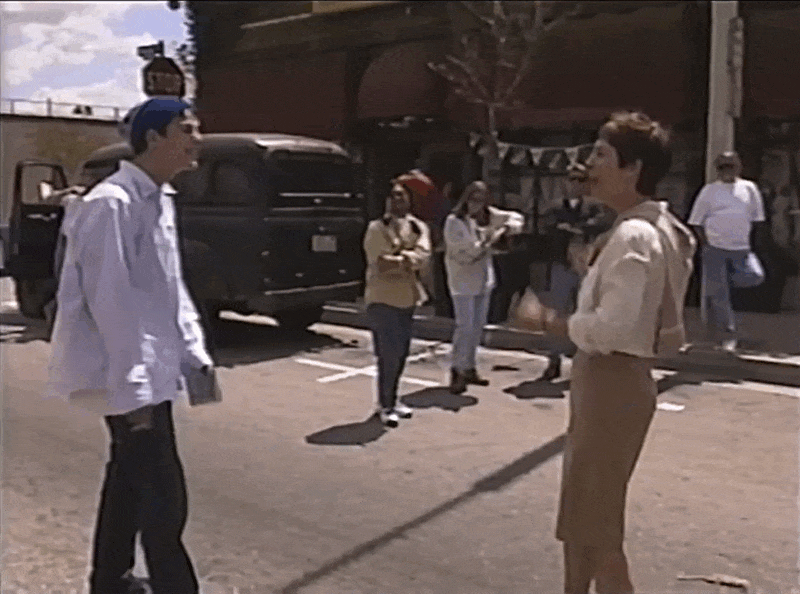
Josh Hartnett in Halloween H20: 20 Years Later (1998) — Behind the Scenes
#he was so cute in this#the way you could see him be nervous about saying his lines#:')))#it was sooo. ohh he was so young im sick#josh hartnett#j hartnett#jhartnettedit#josh#hartnett#behind the scenes#film#movie#the making of#90s nostalgia#90s#halloween h20#halloween 20 years later#h20#john tate#steve miner#my gifset#my gifs#my gif#my gifedit#gifs#gifset#gifedit#gif#by me
46 notes
·
View notes
Text
Ultraman Arc behind the scenes and final cut. Excerpts of episodes 14 and 15.
Fan edit only.
I seriously miss them.
I wish Tsuburaya would do a follow-up/spin-off... about the time Yuma and Rution went to the latter's home galaxy to fix the Sonia sun explosion problem (of course, with the help of Yuma's imagination)... and the events upon and after their return to Earth... and of course more Shuma/teacoffee.
I read somewhere about Yuki Totsuka's favorite Arc episode - he said that although he's attached to every episode, number 14 is his most favorite.
(I laugh at the cinema door opener for no reason at all 😆)
Rution I love you I love you I love youuuuuu 😘😘😘
🎵"arc jump'n to the sky" by access
25 notes
·
View notes
Text
Stray Kids "合 (HOP)" Jacket MAKING FILM
youtube
#stray kids#walkin on water#the making of#bang chan#christopher bang#lee know#lee minho#changbin#seo changbin#hyunjin#hwang hyunjin#han#han jisung#felix#lee felix#seungmin#kim seungmin#i.n#yang jeongin#Youtube
18 notes
·
View notes
Text
Warning: Here There Be Spoilers!!
AMC | Show Me More : Inside The Ones Who Live
youtube
An in-depth look at making the 6 episode AMC/AMC+ The Walking Dead spin-off miniseries, The Ones Who Live, which tells the love story of Rick & Michonne.
Featuring Andrew Lincoln, Danai Gurira, Scott Gimple, and other Cast and Crew Creatives..
#the making of#twd towl#twd towl spoilers#the walking dead#twd spoilers#the walking dead spoilers#the ones who live#the ones who live spoilers#towl spoilers#andrew lincoln#danai gurira#scott gimple#Youtube#titanic with zombie okay but way better
52 notes
·
View notes
Text
An article about the creation of "Magnetic Rose" in particular, and some about "Memories" in general.
4 notes
·
View notes
Text
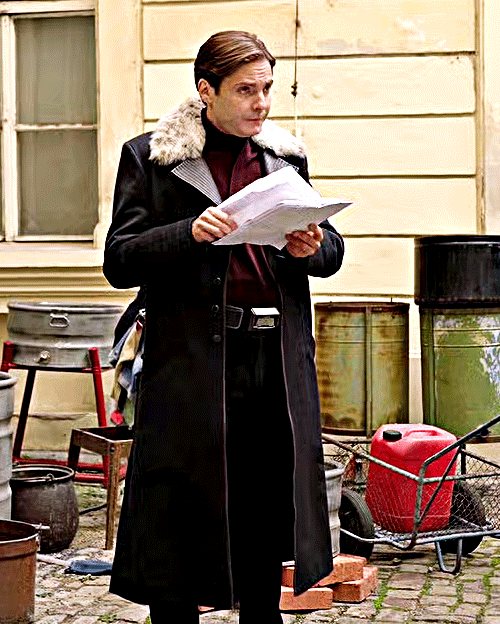
Marvel Studios Assembled 1.2: "The Making of The Falcon and The Winter Soldier" Daniel Brühl as Baron Helmut Zemo
#daniel brühl#baron zemo#helmut zemo#marvel studios assembled#the making of#the falcon and the winter soldier#TFATWS#marvel#MCU#behind the scenes#my gif#look at HIM so serious 🥰
175 notes
·
View notes
Text
The Making of The Gentlemen Netflix: Behind the Streams
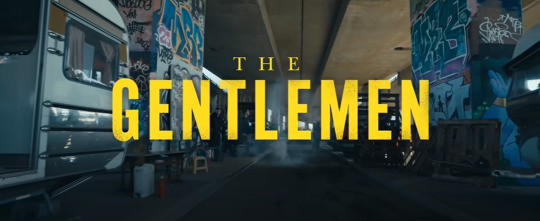

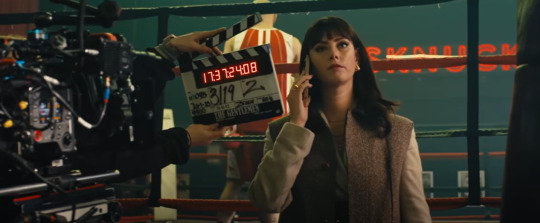



19 notes
·
View notes
Text

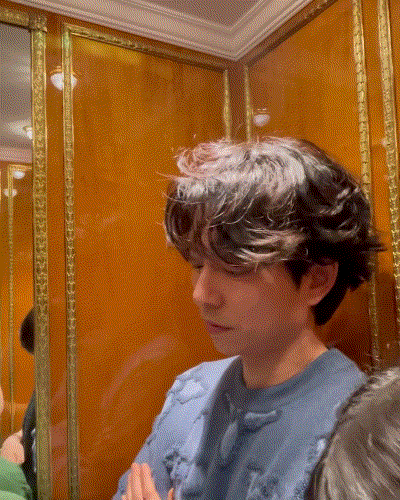
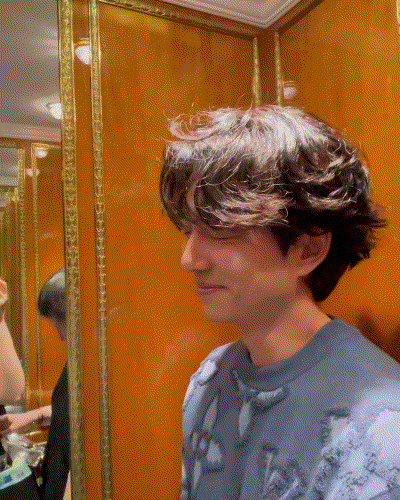
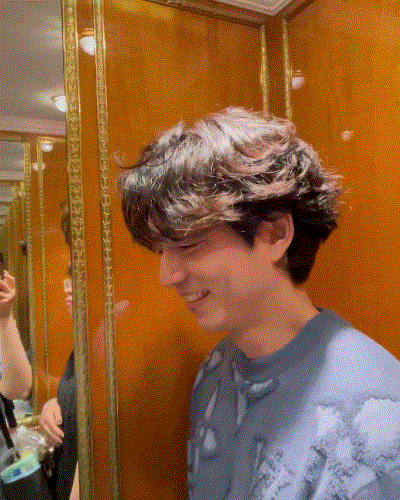
gong yoo behind the scenes of w korea x louis vuitton men's SS 25 (2024)
(source)
#gong yoo#gongyoo#gong ji cheol#gong jicheol#gongjicheol#공지철#공유#k actor#kactor#w korea#더블유 코리아#louis vuitton#louis vuitton men's S/S 2025#fashion show#루이비통#magazine#behind the scenes#the making of#mjracles
72 notes
·
View notes
Text
september 19, 2016
taylor worked on king of my heart
#september 19 2016#september 19#2016#king of my heart#reputation#writing#the making of#gaylor throwbacks#gaylor#gaylor swift#lgbetty#kaylor#karlie kloss
42 notes
·
View notes
Text





Josh Hartnett @ the Behind the Scenes of “LUCKY NUMBER SLEVIN” (2006)
#my baby#hes so cute#😭😭😭🩷#josh hartnett#jhartnettedit#j hartnett#josh#hartnett#behind the scenes#the making of#making of#lucky number slevin#lucky number slevin 2006#slevin kelevra#paul mcguigan#my gifset#my gifs#my gifedit#by me
19 notes
·
View notes